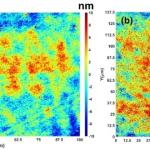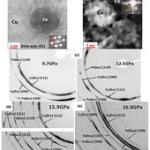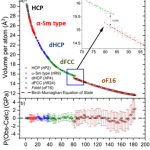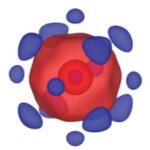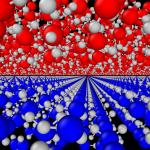Diamond shows unprecedented hardness. Since hardness is a measure of the resistance to external indentation of chemical bonds in a material, information on the detailed electronic bonding nature of diamond beyond several million atmospheres is key to understanding the origin of hardness. However, probing the electronic structures of diamond at such extreme compression has not been experimentally possible until recently. Researchers used the HPCAT facility and successfully measured the inelastic x-ray-scattering spectra for diamond up to 2 million atmospheres, which provides data on the… more
Recently, a selection of research articles which appeared in High Pressure Research has been made freely accessible by Taylor & Francis for a generous period of 3 months. Among the array of noteworthy contributions, is a recent paper that introduces hpMCA, a newly introduced software program at HPCAT. The software is designed to support the energy-dispersive X-ray diffraction (EDXD) data collection and analysis, with a focus on the unique demands of high-pressure and high-temperature experiments.
While angle-dispersive X-ray diffraction (ADXD) remains the predominant… more
Recently published work on non-hydrostatic compression of strongly plastically pre-deformed Zr using new rough diamond anvils (rough-DA) and in-situ x-ray diffraction reveals new general rules of nanostructure evolution, severe plastic deformations, and friction under high pressure. The research effort was led by a long-time HPCAT user, Professor Valery I. Levitas, Anson Marston Distinguished Professor in Engineering/Murray Harpole Chair in Engineering at Iowa State University and faculty scientist at Ames National Laboratory, his postdocs Feng Lin and Sorb Yesudhas, and former postdoc… more
A recent study published in Physical Chemistry Chemical Physics reports on synthesis of cesium superoxide via monochromatic X-ray induced decomposition of cesium oxalate monohydrate at high pressure (HP). The work was a collaborative effort, led by Assistant Research Professor Egor Evlyukhin and graduate student Petrika Cifligu with Profs. Michael Pravica and Pradip K. Bhowmik from UNLV, and contributions from Prof. Eunja Kim at UTEP and HPCAT-colleagues Dmitry Popov and Changyong Park. A primary contribution of this work was the demonstration that a combination… more
Better alloys lead to better devices. Additive manufacturing allows engineers to make finely tuned alloys with previously unattainable combinations of properties. Typically, increased strength would decrease ductility and electrical conductivity. But additive manufacturing can create materials that break the old rules. Here, researchers from University of Michigan, LLNL and ANL used the U.S. Department of Energy's Advanced Photon Source (APS) to look at an alloy of copper (Cu) and iron (Fe) under extremely high pressures. Normally, copper and iron don’t mix. But the additive… more
A team of scientists from the Condensed Matter Section, Physics Division, of LLNL and HPCAT at the Advanced Photon Source have investigated the response of the heavy rare-earth metal dysprosium under static compression in a soft pressure medium up to 182 GPa. In this study, both the pressure-volume relationship and the lattice parameter response of pure dysprosium metal was explored. The lattice parameters of each of the high-pressure polymorphs showed an anisotropic response to compression, as well as turning points in the anisotropy, which can be attributed to an… more
Atoms are commonly thought of as being round. New CDAC-funded experimental work by a team from UC Berkeley, Northwestern University, and HPCAT, Argonne National Laboratory, reports that pressure causes iron atoms to change shape deep inside our planet, however. This shapeshift alters the physical and chemical properties of crystals at depth, influencing the way Earth has evolved over its multi-billion-year history.
The high pressures of Earth's interior can be reproduced in laboratory experiments that squeeze minerals samples between the… more
Understanding the phase behavior of H2O is essential in geoscience, extreme biology, biological imaging, chemistry, and physics. High-density amorphous (HDA) phase of H2O is of particular importance due to its extensive application in preserving biological samples for imaging at cryogenic temperatures. In this collaborative research project, the scientists confirmed the formation of ice HDA at room temperature while included grains of crystalline ice VI. Their study revealed that neither of the two common imaging techniques including: X-ray diffraction (XRD) and Raman… more



